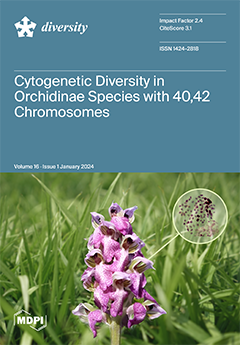A taxonomic review of the Nepticulidae of Armenia is provided for the first time. Currently, the previously little-known fauna of the pygmy moths of Armenia consists of eight genera and 31 species, including seven new species described and illustrated in the current paper as follows:
Stigmella armi Stonis, Dobrynina & Remeikis, sp. nov.;
Stigmella garnica Stonis, Dobrynina & Remeikis, sp. nov.;
Stigmella inopinoides Dobrynina, sp. nov.;
Stigmella magicis Stonis & Dobrynina, sp. nov.;
Stigmella ararati Stonis, Dobrynina & Remeikis, sp. nov.;
Trifurcula vardenisi Stonis, Dobrynina & Remeikis, sp. nov.; and
Etainia caucasi Remeikis, sp. nov. The most common Nepticulidae species in Armenia,
Stigmella muricatella (Klimesch), still remains a taxonomic puzzle. However, the molecular sequences of the Armenian specimens and a specimen of
S. muricatella from Greece were found to be similar, though clearly distinct from the widespread
S. rolandi van Nieukerken due to numerous hypothetical mutational steps. Mitotype analysis revealed that the
Ectoedemia specimens collected in Armenia do not belong to the expected widespread
E. spinosella (Joannis) but are more similar to the less-known
E. mahalebella (Klimesch). Moreover, some specimens from Armenia identified by us as
Simplimorpha promissa (Staudinger) and
Ectoedemia (
Zimmermannia)
longicaudella Klimesch may actually represent possible cryptic taxa, allopatric subspecies or species. However, from a practical point of view, the description of such difficult-to-diagnose taxa is inappropriate. Thus, we have refrained from describing such new taxa based solely on observed molecular differences.
Full article





